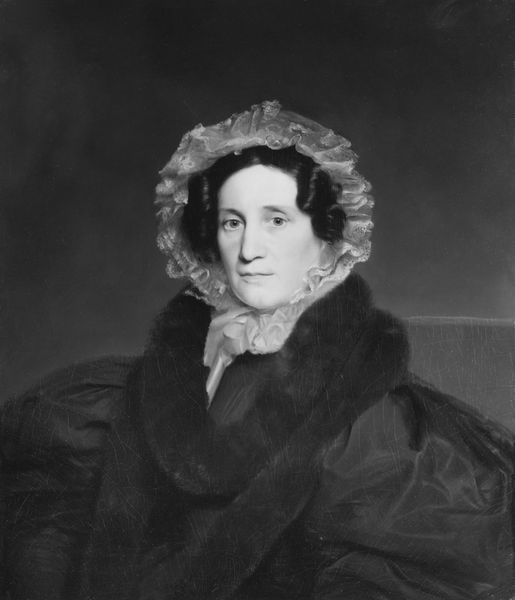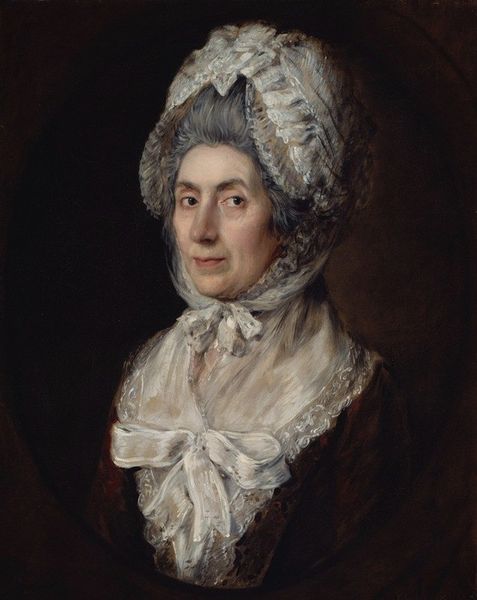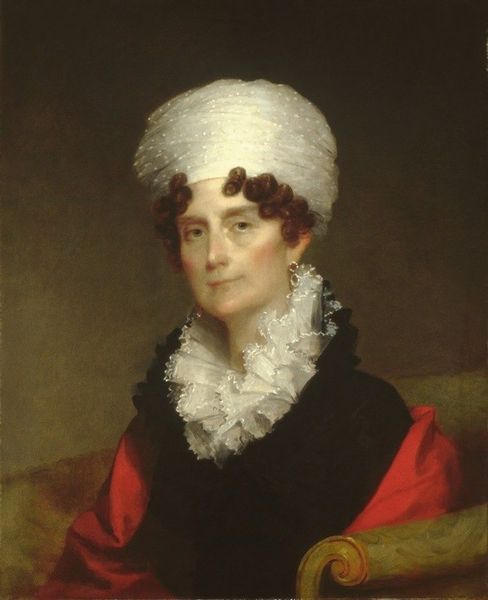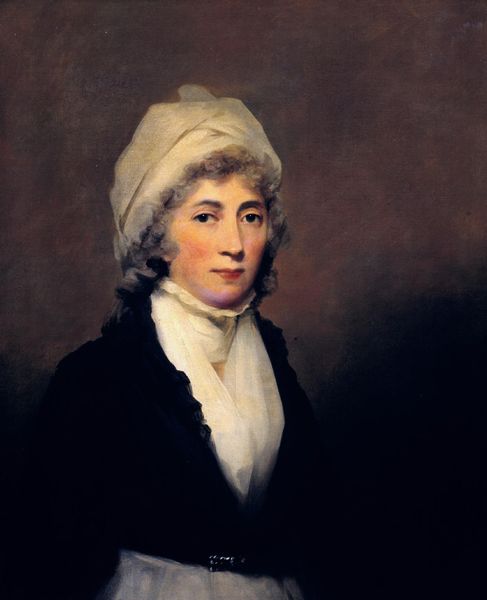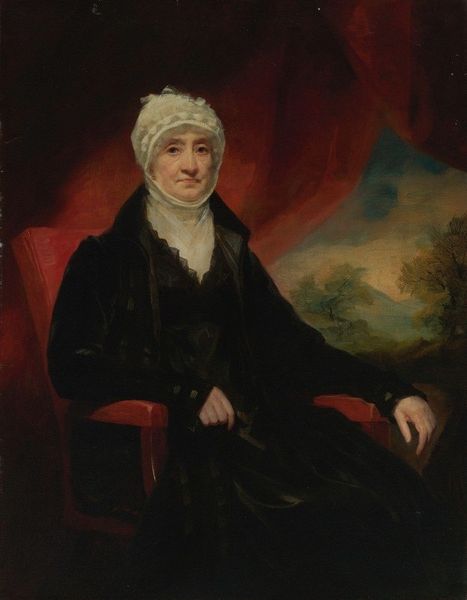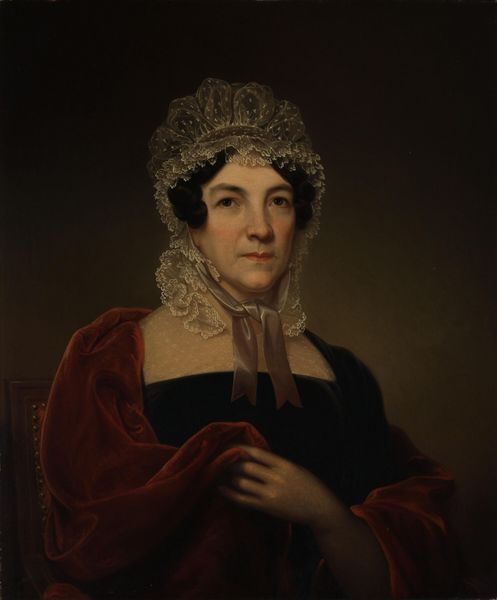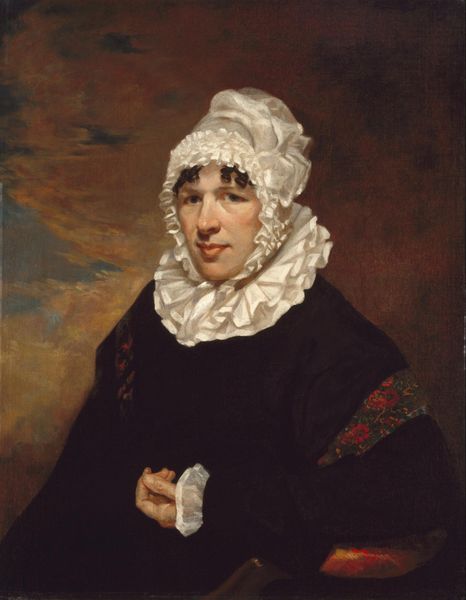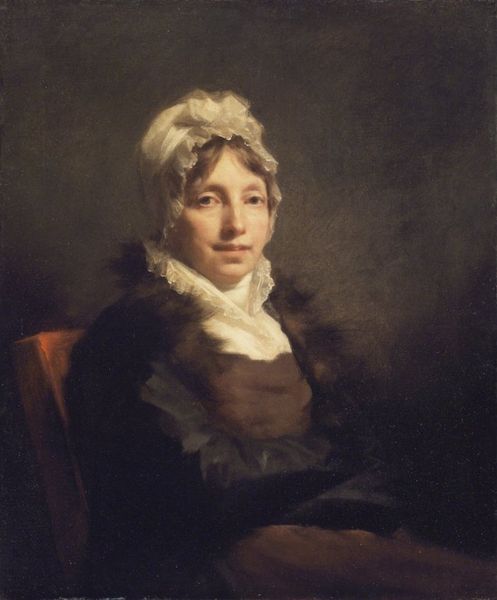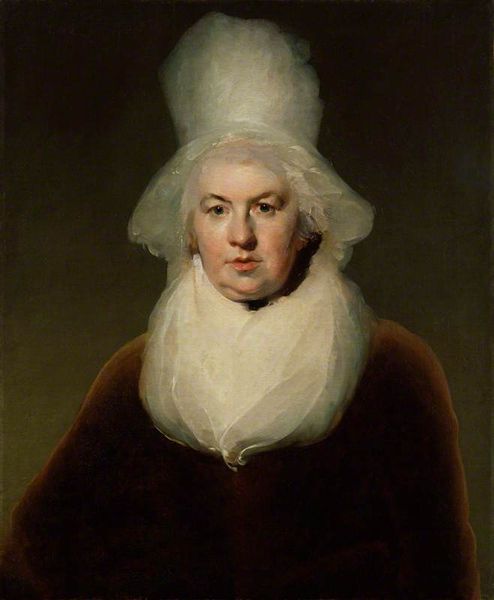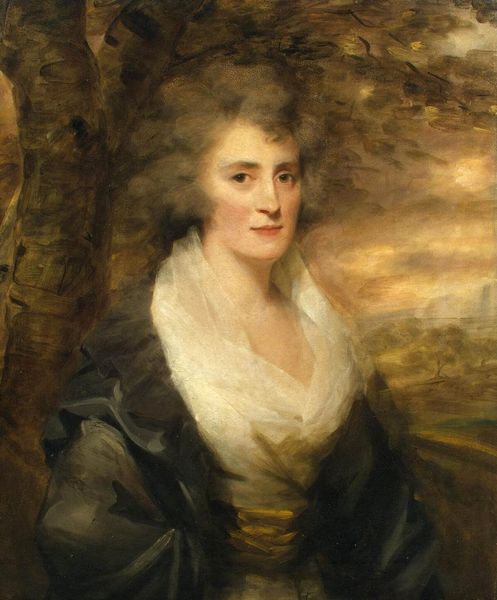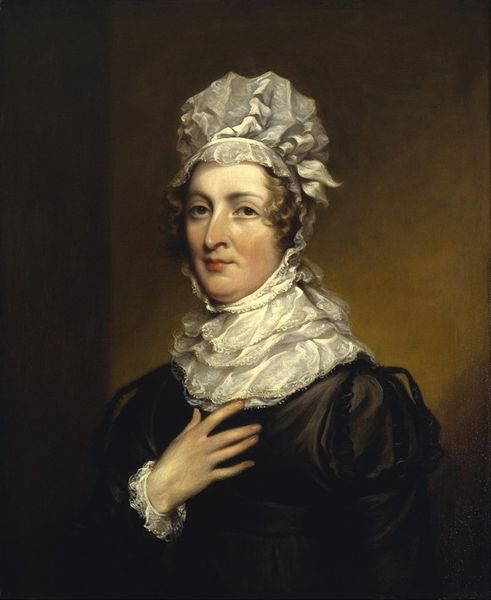
painting, oil-paint
#
portrait
#
painting
#
oil-paint
#
oil painting
#
romanticism
Copyright: Public domain
Curator: What a quietly powerful piece! It strikes me with such reserved intensity. Editor: Indeed. We’re looking at George Harvey’s “Portrait of a Lady,” a painting rendered with oil paint, characteristic of the Romanticism period, though it lacks a precise date. Curator: There's something about the gaze, isn’t there? Very direct, but also incredibly weary. I wonder what societal constraints and expectations she carries. Does her clothing hint at her position? I'm seeing class implications, but also possible religious restrictions. Editor: Absolutely. Portraits, particularly of women in this era, often served very specific public roles. Who was she meant to be for the outside world? I think understanding the conventions of portraiture at the time is key. It dictated pose, attire, and even the expression deemed appropriate. Curator: It's intriguing to think about how much of her own agency she was allowed in shaping that portrayal. Is it submissive acceptance or quiet defiance that I perceive? The fact that we’re left pondering that speaks volumes. Editor: Perhaps she, herself, wanted to project a kind of subdued virtue and dignity to communicate something specific to the world or even her descendents. How much of the artist's interpretation overlaps or contradicts that intention interests me. Curator: That’s a strong argument. The background is so dark; it seems to deliberately strip away anything extraneous, so the focus is unflinchingly on her personhood, making it difficult to read beyond the immediately visible signs of class and status. I suppose, on the other hand, that it isolates her as a kind of spectacle within an imagined, highly controlled historical power structure. Editor: It's all conjecture until more of the painting's social history is available. It would be fascinating to dig into the artist's own inclinations towards their subjects and their position in society, wouldn’t it? Curator: Absolutely. This portrait is a fantastic example of how something so seemingly straightforward can spark complex questions of gender, power, and representation. Editor: I agree. It certainly highlights how portraiture played a significant role in solidifying social hierarchies through imagery.
Comments
No comments
Be the first to comment and join the conversation on the ultimate creative platform.
